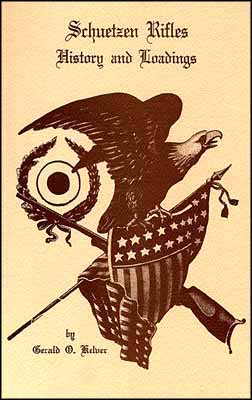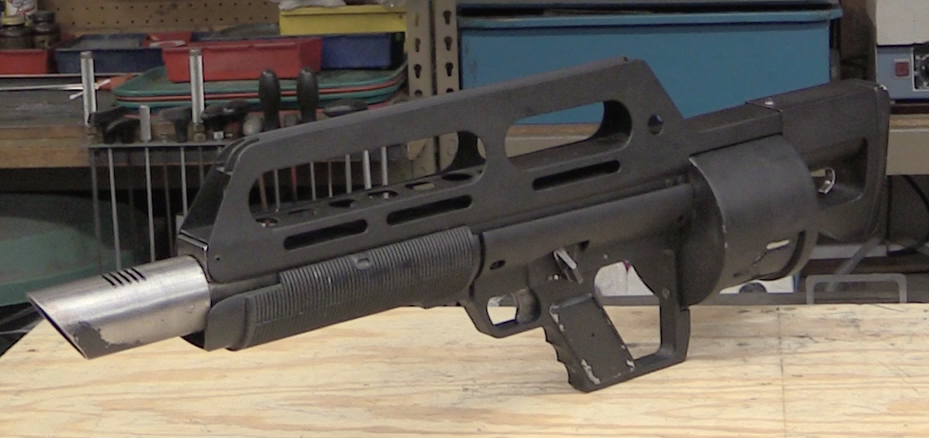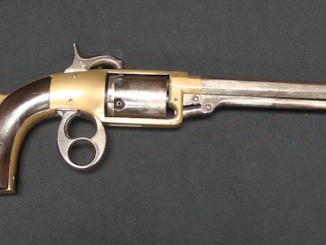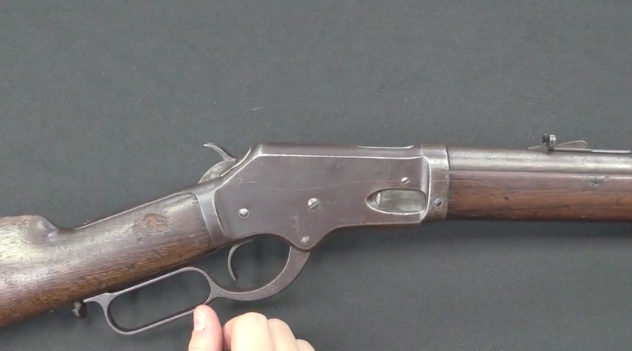 In my ongoing effort to broaden my firearms horizons, I have been reading up on subjects I have little knowledge of. This week, that involved a copy of Gerald Kelver’s Schuetzen Rifles: History and Loadings
In my ongoing effort to broaden my firearms horizons, I have been reading up on subjects I have little knowledge of. This week, that involved a copy of Gerald Kelver’s Schuetzen Rifles: History and Loadings. For those who haven’t heard the term before, Schuetzen was (is) basically the late 19th-century equivalent of today’s Free Rifle competition. Guns could be of any configuration as long as they were non-bolt-action single shot designs. Barrel length, caliber, weight, sights, and other characteristics were left up to the shooter (although generally clubs prohibited telescopic sights). While long-range matches of 800, 900, and 1000 yards range were popular in the 1870s, around 1880 the trend was changing to what we today consider “schuetzen”, shooting offhand at 200 yards..
Kelver’s book discusses the sport briefly, along with other precision rifle competitions popular in the latter half of the 1800s, but this 130-page book is primarily about the different types of American-made competition rifles made at the time, and secondarily about the notable gunsmiths and to a lesser extent shooters that accompanied them. These guns were typically offered in a wide range of calibers and configurations and appealed to both target shooters (in mid-range calibers like the .32 and .38 and also hunters and frontiersmen in larger .45 calibers. The rifles spanned the transition from black powder to smokeless, and many of the very successful shooters had grown up accustomed to muzzle loading weapons, which would influence their thinking.
It was commonly accepted at the time (and was, in fact, true) that when using black powder, loading a bullet from the muzzle would give better accuracy than loading from the breech, so the common practice among “serious” shooters was to seat the bullet from the muzzle and then load a cartridge case with powder charge from the breech. A tedious process, but one which could give results that would still raise eyebrows to this day. Kelver recalls a particular target shot by one C. W. Rowland of Colorado in 1901, who put 10 shots into 0.725 inches at 200 yards (benchrested). He did this with a Pope-Ballard rifle in .32/40 caliber, muzzle-loading his (200 grain) bullets and firing with FG black powder.
At any rate, after a dozen or so pages about the history of the style and matches, Kelver gets into the meat of his content, which are the American-made Schuetzen style rifles. He has chapters on the Stevens, Remington, Ballard, Maynard, Sharps, Whitney, Peabody-Martini, and Winchester offerings, covering their styles, designations, calibers, barrel lengths, and prices. It’s fairly dry reading, but information-dense. Following that, Kelver has brief chapters on some prominent western gunsmiths – Carlos Gove, John P Lower, George Schoyen, AW Peterson, Frank and George Freund, George Schalk, AO Zischang, Adolph Nieder, W Milton Farrow, and, of course, Harry M Pope. These men have some significant numbers of rifles associated with their names, and the information will again be of interest to people looking to collect or research those guns 0 and a bit dry to everyone else. If you’re looking for information on German or Swiss Scheutzen rifles or history, this is not your book – it is specifically on the American guns.
Finally, Kelver concludes with a couple chapters on vintage telescopic sights of the era and information for modern shooters on bullet casting and paper patching. I wouldn’t call these chapters comprehensive by any means, but they will be of some use to the shooter looking to improve their processes for making components or vintage cartridges.

Overall, I’d say that the book is a useful reference is you look at this fine old rifle above and see it as the epitome of sharpshooting beauty. If it strikes you as artistic but impractical or just not particularly interesting, then you should probably pass on Kelver’s work. Though if you’re in a country with very restrictive gun laws, Schuetzen could be a great way to hone your marksmanship with fewer Imperial entanglements…
Schuetzen Rifles: History and Loadings is on Amazon only as a used book at several times the cover price, so if you would like a copy, I would recommend a black powder supplier like the Buffalo Arms Company, who has if for $13.95.




One thing that should have been borrowed from the Schuetzen community was their preference for nose-pour bullet molds. Most commercial molds are base-pour, lending themselves to round-nose and pointed designs. However, a nose-pour mold would be perfect for semi-wadcutter and other flat-point designs.
Wonder if these extremely accurate black powder guns shed any light on the subject of how much cleaning to do on a rifle? Being black powder, don’t image they were ever put away without a good scrubbing. Cleaned a bunch and still shot straight. Maybe it has to do with the bullet being muzzle loaded and thereby sitting securely in the rifling–that would avoid the consequences of damaging the leade of the barrel with a cleaning rod.
The target rifles of that time came with a “false Muzzle” which was a seperate piece of barrel that fitted over the muzzle and allowed the bullet to be started into the rifling and seated, without damaging the actual muzzle.
I’m guessing that the false muzzles must have been fitted to their specific barrel and the two drilled and rifled together to ensure they matched perfectly, as the gap from parting off the end of the barrel after rifling would present a time consuming fitting job to get the rifling to line up again exactly.
I seem to remember finding a scan of F.W. Mann’s “The Bullet’s Flight” on archive .org
That was written at the end of the 19th century, and Mann’s barrels for his experiments were made by Harry Pope – the accuracy gunsmith of the time.
It discusses many of the techniques of the time, and looks at the factors affecting accuracy. The 1980s reprint (I think it was published by Wolfe) was taken from Pope’s copy, and has Pope’s margin notes reproduced
I’ll see if I can find the bibliographic details and the links
The modern day follow up to Mann, would be Hinnant, “Rifle accuracy facts”.
There was a .pdf of Mann’s “The bullet’s flight” here
http://www.nzairgunners.com/nzairgunforum/showthread.php?t=9103
I’ve just tried to go there and their database seems to be down at the moment.
“Schuetze” (or better: “Schütze” (with an Umlaut) is actually the German word for “rifleman” or (more common nowadays) in the sense of “shooter”.
And it looks like I have to get this book to see where this German influence originated. 😉
A lot of U.S. schuetzen matches were shot at a distance of 40 ‘rods’, almost exactly 200 meters. The rod (5.5 feet) was the standard land survey unit at the time and shooters were probably laying out their ranges with survey chains graduated in rods.
I read this article and the posted comments with great interest. I have to say that I learned a lot about a class of rifles I know little about. Thanks to one and all!
The internet grows so fast, information not available a year or two ago now is. Thank you for the pertinent information of the names of the famous western gunsmiths.
I’m writing a western taking place in Denver 1881. I had George Schoyen in it, but had not realized Carlos Gove was his Master. I’d also had A.W. Peterson (only as a mention) again not realizing John P. Lower was his Master. (Rather stupid of me, a Schoyen or an A.W. Paterson don’t spring up as Masters with out a master to train them.) I also had Freund of Cheyenne, not knowing there were both a Frank and a George Freund.
In my book, each of three gunfighters used a different ‘local’ western gunsmith. I had been astounded three greats were ‘there and then’, not realizing there were five. The scene where my heroine’s henchman buys a fancy pistol at Lower’s store in Denver to send to Freund, will be upgraded a few words.
My murderous heroine with a heart of silver will now also meet with Carlos Gove; the best rifle shot in Denver, as her rifle instructor. I was very lucky to find short Denver portrait and biography of Carlos Gove, so I can describe him, long bearded and sixty-one and add a touch of depth to the two Gove sons (one a sometimes prospector) clerking in the gun shop in 1881 and the son-in-law partner Frank Church. Schoyen takes over Carlos Gove’s gun shop upon his retirement in 1884.